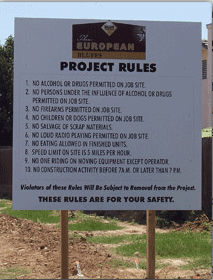There are six primary federal and state regulatory drivers that underlie the environmental approval and permitting regulations your project must comply with. They are:
- National Environmental Policy Act (NEPA)
NEPA requires federal agencies to assess the environmental impact of proposed projects, evaluate alternatives, and involve both other agencies and the public in reaching a decision. - California Environmental Quality Act (CEQA)
CEQA is California’s counterpart to NEPA and requires state and local agencies to identify the environmental impact of proposed projects and, if possible, mitigate the impact. - National Historic Preservation Act (NHPA)
NHPA mandates project compliance with requirements designed to protect historical entities such as buildings, terrain, districts and other indicia of cultural history. - Endangered Species Act (ESA)
ESA was designed to protect critically imperiled species from extinction as a consequence of economic growth and development. - Clean Water Act (CWA)
CWA is the primary federal law governing water quality. The act’s primary purpose is to reduce toxic substances in water and reduce pollution. - Clean Air Act (CAA)
CAA is a federal law designed to control and reduce air pollution at a national level.
The intertwining requirements represented by these six acts and the thousands of regulations and official explanations thereof add up to over 1,000,000(!) pages. This comprises the complex regulatory tapestry your project must comply with. Even if you don’t engage us, we strongly recommend you seek expert assistance before you even begin to consider investing in your project.
We are proud of our successful history of working with the federal, state and local agencies that administer these environmental permitting regulations and are confident we can move your project forward while simultaneously ensuring we protect California’s incredible natural and historical legacy. Give us a call. We can help.


